August 5, 2024
Embrace the Chaos of Change. It's Not Your Enemy. It's Your BFF...
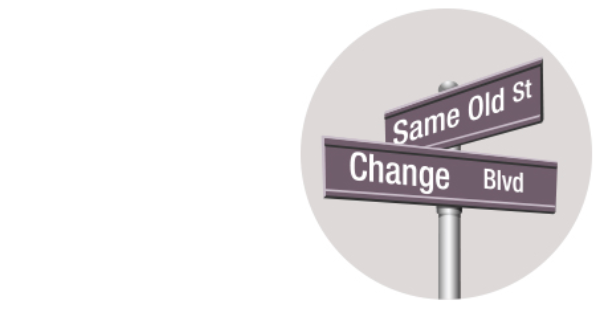
The body content of your post goes here. To edit this text, click on it and delete this default text and start typing your own or paste your own from a different source.
RECENT ARTICLES:
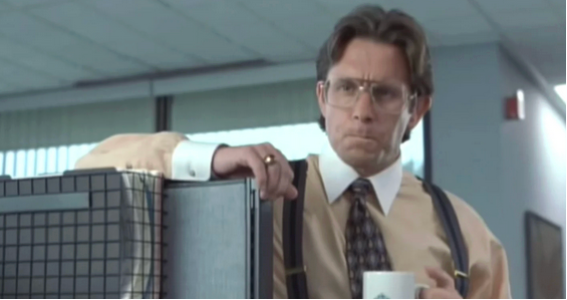
August 24, 2024
Picture you're Peter Gibbons in today’s modernized workplace. Imagine you're at work, trying to work on that ever-important TPS report that your boss, the infamous Bill" Lumbergh requested. Instead of staring into space for 15 minutes, you instead get a notification on your phone of a new video. Scrolling through the endless algorithmic rabbit hole of TikTok, you stumble upon a video of a baby kitten sneezing profusely. It's adorable. It's heartwarming. It’s been viewed 297,000 times already. It makes you tear up, right there at your desk. Shhh - you've discovered you have emotions (congratulations!). Don’t you dare suppress them, because in a world where technology dominates the day, an individual’s real superpower may well reside into tapping into the well of emotional intelligence to be effective. While Office Space is a comedic cult classic, it’s really a before-its-time masterclass in in emotional intelligence. Nay, its emotional intelligence at its finest it is. The field of Emotional intelligence (EI) has grown exponentially since its introduction 29 years ago, but its constructs remain controversial due to individual interpretations inside and outside of the field of study. EI remains elusive as a widely accepted measurement and often requires interpretations of self-awareness, recognition, and/or self-reporting. Back in 1995, Daniel Goleman’s published concepts around EI introducing a mainstream narrative to the public that explored the relevance of human emotions and their impacts towards cognitive reasoning. Goleman raised thought-provoking notions illustrating the concepts of EI as they relate to IQ, noting that they could be predictive indicators of success. At the time of its publication, EI wasn’t what is today. It was barely in its infancy. Much of the research and evidence referenced in Goleman’s original work was insightful but grounded in interpretative theory. A nice idea at best. Goleman pushed the narrative by foundationally rooting EI back to early adolescence, shaped by their upbringing, evolving as a teenager, and maturing in adulthood before extending those learned traits at work. The teaching of social and emotional learning in schools experienced a “rapid ascension” that was “taken up broadly” by educational administrators once it was introduced (Stearns, 2019). This is where I believe EI has gained substantial credibility. While Goleman’s intentions may have been to educate the audience, tones of his journalistic background are seeded throughout the book, mixing evidence-based results with his interpretations. Well, it’s 2023 and EI’s come a long way. In his tenth edition, Goleman further explains that “if one day I overheard a conversation in which two strangers used the phrase emotional intelligence and both understood what it means, I would have succeeded in spreading the concept” (Goleman, 2006). Mission [somewhat] accomplished Mr. Goleman, as it can be argued that he indeed succeeded in qualifying that the concepts of EI are recognized and generally acknowledged in today’s landscape. Be it in the realm of education, as evidenced by the early educational adoption and practice of social and emotional learning (Schonert-Reichl, 2017), or being practiced as an intangible key to success by the likes of business leaders, EI is real. EI’s rapid acceptance raises considerations of who is driving adoption and whether its concepts, policies, and governance are being driven by psychologists, teachers, journalists, organizations, or working professionals. The answer is all of them, as all are driving EI's adoption. A recent post on LinkedIn referenced the top ten most sought-after skills over the next 5 years, of which you can see Goleman’s influence has grown from theoretical to practical. While technological skills will be in demand and ever evolving, this top ten goes against the narrative you hear about a shortage of skills base resources for which organizations will continue having a hard time filling those roles (you can thank Automation and AI for changing the narrative). The post cite the following in particular order: 1. Creative Thinking (EI) 2. Analytical Thinking (EI) 3. Technological Literacy (IQ) 4. Curiosity (EI) 5. Resiliency, Flexibility, and Agility (EI) 6. Systems Thinking (IQ) 7. AI and Big Data (IQ) 8. Motivation and Self Awareness (EI) 9. Talent / People Management (EI) 10. Customer Service (EI) That’s 70% EI, 30% IQ. I get it. There are may "top ten" lists out there when it comes to needed skills in the workplace, but the fact that a list like this exists shows how impactful EI's presence is making. What I’m writing here is that while processing data has become a technological commodity, people processing has not. Yes, Watson may be programmed with a higher IQ because it can compute faster, but nothing can replace the feeling that an individual’s EI brings to table. Sometimes, it’s much more effective to read to the room than to read the excel data. Morale of the story ... be more like Peter Gibbons. Reference and Additional Readings Goleman, D. (2006). Emotional intelligence; Why It Can Matter More Than IQ. New York, NY: Bantam. Kimberly A. Schonert-Reichl. (2017). The Future of Children. Vol. 27, No. 1, Social and Emotional Learning and Teachers, pp. 137-155. Salovey, P., & Mayer, J. D. (1990). Emotional intelligence. Imagination, Cognition and Personality, 9, 185–211. Stearns, C. (2019). Critiquing social and emotional learning: psychodynamic and cultural perspectives Lanham, MD: Lexington Books.
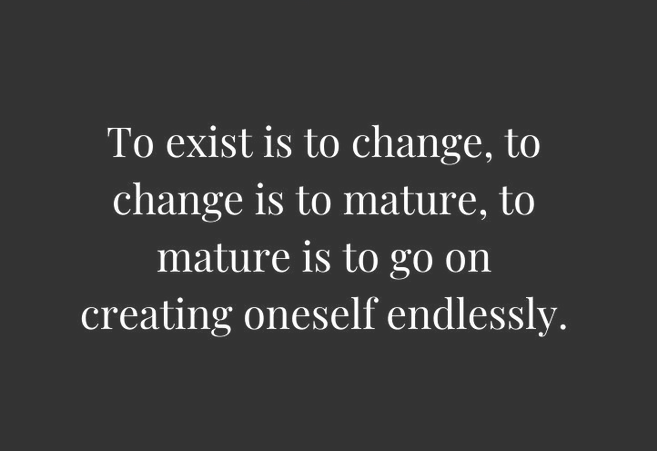
July 23, 2024
Last week I went through the ever important lessons and rules to live by in the 5 d's of dodgeball (really 4, but you gotta respect the rules to dodge, dip, duck, dive, and - dodge). While its critical to know how to dodge a wrench, it's also important how we deal with life's other aspects outside the dodgeball arena. There's a high probability that you've never met Tony Robbins but you've certainly heard of him. You probably know someone whose said they've been influenced by him. Whether you like his style or not, believe in him or not, he's influential (not an influencer). His key to results? I personally think he's embraced the concept of fear. I think he sees fear as a challenge and not a risk. He's not afraid of change and very much encourages it. Back in 2019, he introduced 6 human needs which define the reasons people do what they do. The needs are comprised of Certainty, Uncertainty, Significance, Connection, Growth, and Contribution . I want to focus on uncertainty. I believe uncertainty is a common trait that most people struggle with. Uncertainty is defined as a person being in doubt, of dubiety, with skepticism, of suspicion, feeling mistrust, and a lack of assurance. In our professional careers, we become accustomed to working in a certain way. Why? Because the majority of working professionals slow up learning or cease learning. This creates uncertainty because outside of our experiences, everything else becomes unknown. Sure, you learn on the job skills, but in comparison to one's education, the amount of reading and learning of what we are taught is on the job training. Of course I'm going to back this up with some staggering statistics : 33% of U.S. high school graduates never read a book after high school. 50% of books started are never read to completion. 56% of young people claim they read fewer than 10 books a year. 70% of adults have not been in a bookstore in the past five years. 80% of U.S. families have not purchased a book this year. On the job training is the main source of where working professionals gain the other 5 human needs . As we pick up professional skills in the workplace, we become (a) certain in working abilities in which we identify with, (b) gain a sense of significance as we become subject matter experts, (c) develop a connection with those set of skills, (d) grow comfortable in what we've learned, and (e) feel like we are contributing. Any change that impacts those human needs introduces uncertainty. Unfortunately, uncertainty is a trait that the majority of us are never taught to cope with. We almost act in uniformity as a herd as we conform as a society and seek out comfort. We're wired to be risk averse. We're accustomed to stay in our comfort zones. It is here where we see how this impacts our professional careers. Research shows that only 64% of projects meet their goals. A staggering 70% of organizations report failure against what projects were promised to deliver. Forbes cited that 95% of product innovation projects fail. 70% of digital transformation fail over time. Only 30% of digital transformation projects result in improved performance. Finally, 90% of projects fail to deliver any measurable ROI. Why? Well, there's a common entity: people. In a twist, it’s not people's fault. Unless you've studied in a field like psychology or delved into wellness health, you'll find that most people are never taught how to cope. Look at some of the common reasons the research states that projects fail: Changing priorities within organization (people change priorities) Inaccurate requirements (people gather and interpret requirements) Undefined risks/opportunities (people don't unearth all possibilities, limited by knowledge and experience) Poor communication (no, that never happens, does it?) Inadequate cost estimates (forecasts are but educated guesses) Resource dependency (people not understanding all efforts needed to accomplish tasks and looking for the lowest budgetary bidder) There are more, but you see my point here, right? Everyone comes in with a different level of exposure, so expecting uniformity on projects at the macro level without taking into consideration individuality at the micro level promotes this cause and effect of uncertainty towards change. Truth is, we should welcome change. It's ironic that we're told at a young age that change is constant, but once we get inundated with our professional careers, we want things to stay static. We get comfortable with a house, cars, kids, vacations, material possessions, and more. Anything that has the potential to introduce disruption to those other 5 human needs may result in uncertainty hampering our ability to cope with change. It's not something we easily adapt and adopt to. I believe a certain level of uncertainty in our professional careers can be healthy for our growth for several reasons. It can help with our ability to better problem solve, stimulate learning, foster curiosity, enhance emotional intelligence, and develop decision making. If you didn't realize, all of those are coping mechanisms. While uncertainty can be uncomfortable, embracing it as an inevitable part of our careers can help us develop essential skills, broaden our horizons, and ultimately contribute to our growth. I'm not here to tell you there's a time limit on any one job, but maybe a little uncertainty is a good thing as it spurs creativity and deters complacency. Keep in mind that the length of time an employee stays at one job depends on several factors such as age, job, industry, and one's personal life, but maybe there's a thing to the number 4. According to the Bureau of Labor Statistics, the average tenure for employees is 4.1 years . Furthermore, the typical length of time for consultants to stay at a big four consulting firm is around 4 years. High school last 4 years. College is supposed to last 4 years unless you're a super-duper senior like Van Wilder, but even Van Wilder had to embrace uncertainty and change.
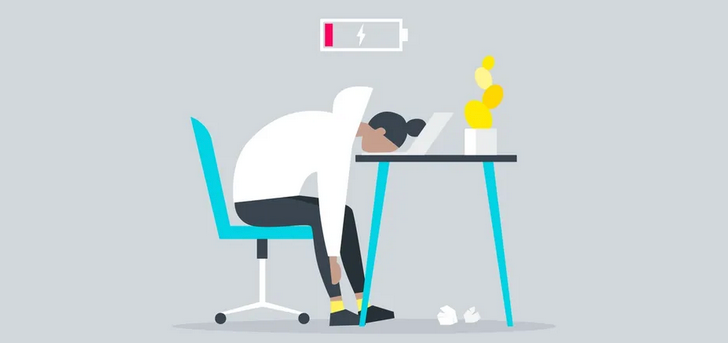
July 23, 2024
We've all heard the phrase: work smarter, not harder. Even with all the technological advancements, productivity tools, collaboration services, the concept of working smarter and not harder is easier said than done. See, most employers introduce technologies so that employees can be more productive. An easier way to think about this is getting able to do more in less time. While companies intend for technologies to deliver increased productivity and utilization, there's a direct correlation and causation towards an increased pressure to accomplish, leading to the not-so-wonderful world of burnout. A vast majority of us have experienced it as evidenced by research articulating that 89% of workers have experienced burnout within the past year, 77% of employees have experienced feelings of burnout at their current job, the overall burnout rate has increased by 13.5% to a whopping 59% from 2021 to 2022, and 21% of workers say their company does not offer any program to help alleviate burnout. Burnout is a psychological phenomenon and medical syndrome characterized through emotional exhaustion, feelings of cynicism and reduced personal accomplishment. While not defined as a medical condition, the World Health Organization has labeled workplace burnout as a syndrome and occupational phenomenon (Wilke, 2019), so the impacts are real. Growing concerns in the workplace have been documented that show significant negative effects affecting both individual and organization, noting a recent study concluding that 95% of human resource leaders cite a correlation that burnout sabotages employee retention (Turner, 2019). The modern workplace is filled with individuals who feel exhausted citing growing concerns about their physical and mental health. Recent data (March 2023) from the TalentLMS and Culture Amp report a glaring chasm between what leaders think is a great workplace culture and reality. The disconnect is wide and concerning as 41% of women reported they were more likely to suffer toxicity in the workplace, 43% of employees say that leadership is turning a blind eye to toxic behaviors, and 45% say that senior executives promote unhealthy competition among managers and employees. Why is this all important? Well, there's a hidden cost to burnout, as it accounts for an estimated $125 to $190 billion in increased healthcare spend within the US (Garton, 2017). The question can be (really needs to be) raised as to why organizations haven’t been addressing the issue with greater emphasis. When all the rhetoric over the last 2 to 3 years has been about touting company culture, burnout continues to be a problem because culture continues to be a problem. Why? I have a theory, and it's rooted in a growing disconnect. Acknowledge it or not, the growing disconnect between employer and employee is real. This is common in the modern professional landscape where workers are conceding their time, working longer hours, and taking work home, often continuing after hours on computer equipment (Malasch & Leiter, 1997) such as email, group messaging, and web conferences. Don't believe me? Would you believe that most organizations spend more on enabling technological services per employee than training, up-skilling, or re-skilling their resources? Per an Industry Report, large organizations spent more than $1,689 on training per employee, which is more than mid-sized companies at $826 and small at $1,396 companies. Service led organizations spent $1,512 per learner in 2022, followed by retailers/wholesalers at $1,299. Think about. Organizations spend more on supplying a user with a laptop and a welcome bag than actually maintaining and growing that employee. Did you know that the median white collar compensation in the US is roughly $97,000 per year, and that if and/or when an employee leaves a company, there's an underlying cost equal to 1/3 their salary in - wait for it - lost productivity and potential revenue per employee? So, if an organization invested double in training, say around $3,000 per employee (or 1/10th of the loss in revenue), there's a higher probability that the turnover and burnout rates disparate as employees will feel they are being invested in. Spend a little, gain a lot. Spend little, lose a lot. Real investment in individuals that pays dividends is not a novel concept. It's smart business. While individuals won't quit their jobs in masses because everyone needs an income, you can can bet that individuals will feel unmotivated given their heightened states of emotional dissonance (psst - a majority already do). This circles back to premise of individual and organizational approaches, where disconnects lie in the nature of a job versus the nature of the person who is doing the job. It's really long overdue that we take a modernistic view with emphasis on known and new burnout characteristics. HR alone can't do it. Simply putting in place a Chief People Officer is a step in the right direction, but still not enough. It takes a collective team working to come together from the top-down and from the bottom up. I think we need to take a page from Rip Van Horn (may he rest in peace) as he outlined how to build a team in the cult classic Dodgeball, teaching them how to work collaboratively in following by administering the 5 rules to tackle the game of Dodgeball in as we extend it to tackling burnout and culture. In Dodgeball, one has to learn how to dodge, duck, dip, dive, and - dodge. In the business world, let's engage, empower, counsel, mentor, and - engage. If you can dodge a wrench, you can dodge a ball right? Sources Garton, E. (2017, July 20). Employee Burnout Is a Problem with the Company, Not the Person. Retrieved from https://hbr.org/2017/04/employee-burnout-is-a-problem-with-the-company-not-the- person. Malasch, C., & Leiter, M. P. (1997). The truth about burnout: how organization cause personal stress and what to do about it. San Francisco, CA: Jossey - Bass Inc., Publishers. Rutner, Paige S., et al. “Emotional Dissonance and the Information Technology Professional.” MIS Quarterly, vol. 32, no. 3, Sept. 2008, pp. 635–652., doi:10.2307/25148859. Turner, A. (2019, May 28). The World Health Organization officially recognizes workplace 'burnout' as an occupational phenomenon. Retrieved from https://www.cnbc.com/2019/05/28/who-recognizes- workplace-burnout-as-an-occupational-phenomenon.html. Wilkie, D. (2019, July 11). Workplace Burnout is Now an ‘Occupational Phenomenon’. Retrieved from https://www.shrm.org/resourcesandtools/hr-topics/employee-relations/pages/workplace-burnout-a-medical-condition.aspx.
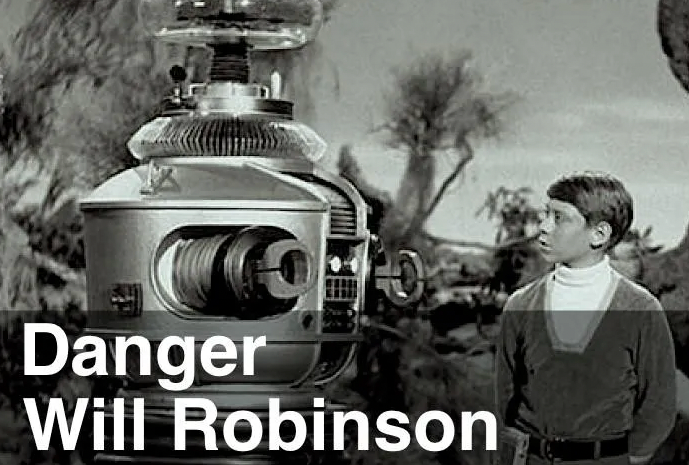
The Robots Aren't Coming ... They're Here. They've Been Here for a While. There's Just More of Them.
July 23, 2024
Not going to lie - technologies like Chat GPT are amazing and terrifying at the same time. In one sense, it's a useful service that can help when applied usefully. On the other hand, it's an evolving technology that has the potential to disrupt. There was already transformative disruption, but the likes of AI technologies like ChatGPT are disrupting disruption. Disruptive technologies are not new, just more prevalent. Back in 2020, Jack Kelly of Forbes reported that 60 million jobs were already lost and displaced, with many more to come in this technology space. While there's a great deal of media attention around displacement since ChatGPT made its debut, we've been given warning signs of the changes on the horizon for years. A lot of people just chose not to be inclined to think automation and AI could potentially impact their careers. Back in 2020, The World Economic Forum Future of Jobs Report cited seventy-five million domestic jobs being in jeopardy of being displaced through 2030 by technology, only to be updating the timeline where the Forum now cites that automation will supplant about 85 million jobs by 2025. Everyone's natural reaction is a heightened sense of anxiety as a result of panic and fear because people will naturally conclude that they are next. That's where we, as working professionals, were taught what to think in the face of change as organizations have a fiduciary obligation to their shareholders and owners, not their employees. Organizations have that right, but people should also realize they should hold a fiduciary obligation to themselves as well. How? Well, I'm glad I asked! One word: Perspective . Change your perspective. You read above that 85 million jobs are at risk. Could you be one of those? Statistically speaking - yes. Statista reported that there are 132 million working professionals in the US. Statistically speaking, that's nearly 65% of working professionals in the US are at risk of being displaced. That is a 2/3 majority. To put it in perspective, when you're at work tomorrow, look to your colleague to your right and your left as these stats suggest you should say goodbye to your two colleagues as 2 of you won't be around this same role in 2 years. Scary right? Sure. Until you realize that the same report cites that 97 million new jobs are due to be available as a result of this technological disruption. Do the math and you'll see that organizations are going to need to find 12 million more skilled workers than what is available to pull from in the market, so you should realize the opportunity in front of you as a matter of perspective. According to an IBM survey, more than 120 million workers globally will need retraining in the next 3 years due to AI’s impact on the job market ( Kelly, 2020 ). Truth is, technological change is highlighting the effects on the masses by creating active choices that are both proactive and reactionary. Direct actions are required citing that new jobs will require completely different skill sets, nudging organizations to adapt to changing markets and people to adopt change within themselves. People know technological change is quickly coming, but organizations and social outlets are doing a poor job of framing this as a fear versus framing it as an opportunity. The statistics show that 61% of workers reported that productivity is affected by their mental health issues and 37% identified that the environment they work in contributes to those symptoms. The poor job in framing technological change has deferred many from creating a commitment strategy toward these inevitable changes. It can be argued that fear of emerging technologies is a new stress that has not been acknowledged fully but is common in the workplace. There is a realized trepidation workers have towards the impact and adoption of technologies. The definition of behavior as a manner of conducting oneself is significant because behavior can be changed if so desired. Mental stress in the workplace has been recognized as a major behavioral health issue in the modern working environment. The wave of technology disruption, lack of re-skilling, and problems in up-skilling resources to fill future roles is a bi-directional problem stressing both management leaders and day-to-day workers. This has resulted in a loss aversion, culture, and attrition crisis within organizations. When change is intrinsic, it is welcomed, and people have the drive to change. The problem is that this change is extrinsic as the market is forcing change, raising social concerns where anxiety is creating people’s fears to be ever-present. People feel that they are in control of their careers over time as they create and project a trajectory when they start in a role. When developing a wealth of knowledge and experience in one’s career is threatened, there’s a sense that one’s contributions are being undermined as the sunk cost considerations of developing those sets of skills become discouraging as most people are not inclined to change. Perception is key here in taking back control. One of the most important elements in the occupational stress process is the perception of control. More organizations indirectly create dependencies on technology which cedes control to those technologies to effectively run operations and productivity. Technology can both be positive in the advent to work but equally negative in the stress of work that affect both career and culture. There must be a consensus of a singular cultural identity throughout the organization that is communicated, publicized, and practiced. Examining real transformational change in the workplace requires both qualitative and qualitative insights. Identifying how the management level views overall organization health provides is how the directional and fiscal guidance needed to accurately design tightly defined processes in hopes of yielding greater adoption results. The reality is technological changes such as AI and robots aren't what's scaring people. It's the daunting domino effect of having to change, instead of looking at it as wanting to change. Robots aren't intrinsically relentless, they're just programmed to emulate what they are. Who are they emulating? You guessed it - you! Take your control back.
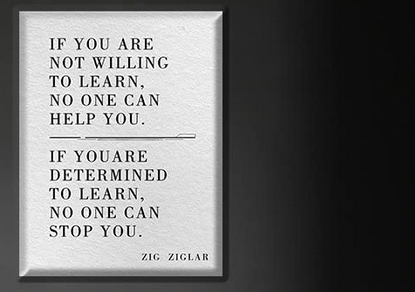
July 23, 2024
You've likely come across Zig Ziglar's willingness quote randomly in a mall or a bookstore (if people can still recall what those were). Two semesters ago, I took a course on the Psychology of Willpower, which centered on distinguishing one’s ability to willingly control and regulate situational actions and emotions. We learned there were six distinguishable psychological attributes that people relate to comprised of self-regulation, self-control, cognition, conflict, impulsivity, and conscientiousness. Those attributes were embodied when Paul Rulkens (TEDx Maastricht, 2014) gave a TedX talk on why most people approach willingness incorrectly. In his Ted talk, Mr. Rulkens highlights that data shows only three percent (3%) of people are inclined to do different things, leaving 97% of people repeating the same things they’ve done before, seen, or heard. While Mr. Rulkens doesn’t dive into modeling, his talk lent itself into one’s ability to objectively look at how they systemically look at their goals. While Mr. Rulkens references organizational change, he’s still talking about people’s willingness to change, and changes are nothing but goal-oriented outcomes. I’m of the belief that people will approach change, regardless of the subject or task, the same way regardless of what they do. Whether people are approaching change at work with trying to train for something new or change as it relates to their health, they’re going to approach and look for sources in the same manner. This 97% is nothing more than changing conditional habits. It goes without saying that mental wellness plays a significant role in one’s overall health. Learning about those attributes conjured up the struggles I went through on my weight loss journey back in 2001, when i weighed a svelte 303.7 pounds, then willed myself to lose 110 pounds and maintain that weight loss for over 21 years. If you ask my brothers, it wasn't the working out by my willingness to eat cardboard (protein bars) and not live a real life. When faced with the thought of having to do lose the weight, it felt like an obligation or requirement to do so. I understood that I was going to have to confront my ability to regulate and control my desires and impulses, being conscious of both the decision's and indecision's in my life. What I was not ready for were the conflicts I was going to have against my own conditional and habitual impulses. The generally accepted definition of the word conditional is subject to one or more conditions or requirements being met, made, or granted on certain terms. The second aspect to this is habitual, whose generally accepted definition is a settled or regular tendency or practice, especially one that is hard to give up. As individuals, we tend to develop a set of conditions based on individual, cultural, and societal norms from which we learn to operate within. As such, we form a set of habits to objectively operate in, forming our foundational processes that can be traced from which our habitual tendencies are rooted in. Of those cultural and societal norms, a great deal of our habits are subjective to generally accepted processes, which provide the framework for how an individual operates. It’s because of these conditional habits that most people find themselves in a conscientiousness state to follow socially proscribed norms. That is where i found myself. I found myself in a state of subjective feedback loops when I was attempting to identify my intrinsic motivations, cognitive operations, affectivity, ability to respond, and personal perceptions towards my stated goals, wrongly focused on what I was seeing others had done and were doing. When I was seeking information of where to get started, the conflict I didn’t anticipate was the one of my own dualities in battling impulses versus being more deliberate in my process. I was very much approaching things from a System I model of subjecting myself through a process where only over time, and through trial and error, did I adopt a System II objective methodology that I’ve since adopted as attributes in most of my own professional and personal circumstances. The class made me realize what I had gone through was a goal systems process that didn’t form until I was able to measure the importance of my goals by making stronger connections in what I wanted to do (key words - what i wanted to do, not what i had to do). Focus was an issue for me. When people have to make a big change in their lives, their efforts can be undermined if they are trying to make other changes as well (Baumeister & Tierney, 2012). I wanted to lose weight, but found myself being impulsive, reflexive, impatient, responsive, and immediate on my actions (System I). I saw who I wanted to be, which was fit and slim, but had no idea that how I was approaching my efforts actually was derailing them. That approach led me to start, see minimal progress, and fail within two weeks as my physical and mental states were not regulated to efforts I needed to execute on. When I moved to a System II process, where I found myself in a controlled, reflexive, deliberate, order of mental operations, and strategic mindset, I was able to find a pathway by which I could achieve my desired outcomes. There was a need to achieve a different mindset, moving from a fixed to a growth mindset (Taylor, 2017). Professor Carol Dweck of Stanford University noted that a growth mindset is a desirable trait to have, but not something that can be declared as it was a difficult journey one takes over a long period of time (2016). The power of one’s mental well-being can drive or derail one’s ability to focus and commitment to their goals. There is much continued research to do in the space of self-regulation, self-control, cognition, conflict, impulsivity, and conscientiousness. If you thought this article was about my journey in losing weight, you would be mistaken. This is your journey too. Be weight loss, professional growth, promotions, personal attributes, education - this is your story. The journey in my weight loss formed my willingness to change, adapt, adopt in pretty much everything I do, personally and professionally. It's worked for me for over 21 years so something's working. Can you identify yours? Sourced References Baumeister, R. F., & Tierney, J. (2012). Willpower: Rediscovering our greatest strength. Allen Lane. Dweck, C. S. (2016). Mindset: The New Psychology of Success. Random House. Taylor, R. (2017). Willpower discover it, use it and get what you want. John Wiley & Sons. TEDx Maastricht. (2014). Why the majority is always wrong. YouTube. Retrieved September 11, 2022, from https://www.youtube.com/watch?v=VNGFep6rncY .
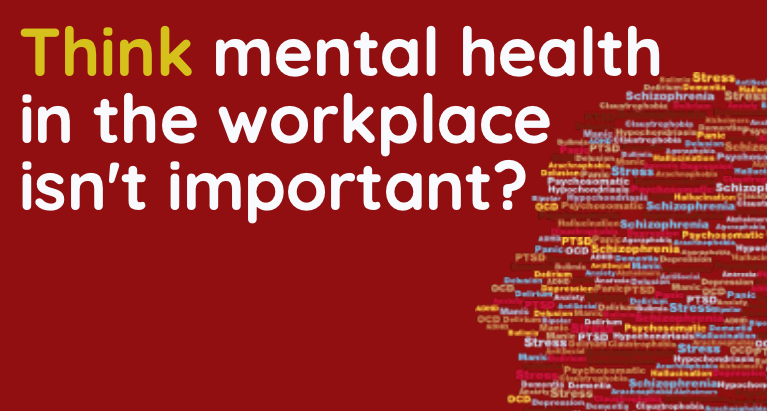
July 23, 2024
Mental health is a taboo subject that has historically been a heavy burden for individuals to publicize. According to the World Health Organization , approximately 450 million people worldwide are battling a form of mental wellness. Of those 450 million, nine out of ten people acknowledge that they face stigma and discrimination because of their mental health problems (Baker, 2019). Telling stat, isn't it? So what does that have to do with people in the workplace? Well, those 450 million people work, don't they? If you think for a second that mental wellness does not seep into the workplace, then you're not watching the tides of this subject rising. However, just because the tides are rising doesn't mean it's being addressed, because frankly, it's not. Factors affecting mental health in the workplace have historically been influenced by pressures common to the workplace (e.g. market competition, project deadlines, market disruptions, workplace politics, and fiscal restraints). These pressures continue to impact productivity. From 2006 to 2016, average healthcare spending increased nearly $7,000 from $11,480 to $18,142 , impacting domestic earnings by $193 billion accounting for 400 million work days lost. So what's got to change? Well, for starters - a lot. If the workplace is really subject to change, then change has to be an objective from the top down. In a 2023 study regarding Company Culture in Leadership and Engagement , only 28% of executives understand their company’s culture and yet every day you read about every company touting a great company culture. It's never easy talking about mental wellness, let alone telling someone about mental health in a private setting, to a family member, or even health practitioners. We have to evangelize and enable, for as long as the workplace has been around, the perception to publicize mental health in the workplace often carried a negative stigma with it, but it doesn't need to. Don't believe me? Then why is it that even though nearly all (98 percent) of mid to large domestic companies that offer Employee Assistance Programs (EAPs) find that only 4% of employees use the programs each year (Source: Mental Health America)? For as much as insurance costs continue to skyrocket, there's a massive under-utilization of the privileges allotted to working professionals who are worried about the increasing workloads, fear of recessions, and underlying negative current that technologies such as ChatGPT like automation will make certain roles obsolete. An EAP program is not just tied to counseling, but can be leveraged for career coaching. Starting to see where I'm going with this? Empowerment. Career Development. Mental Wellness. They're all connected. As it relates to working professionals, evangelizing an EAP program can outline a level of professional development by enabling such things as: Removing and overcoming obstacles to individualized performance Definition of goals and performance expectations Alignment of organizational and individual goals Self Empowerment In a 2021 American Psychological Association survey published by the US Department of Labor, nearly 3 in 5 employees said they have experienced negative impacts of work-related stress in the past month, and a vast majority (87%) of employees think actions from their employer would help their mental health. There's a way to close the gap and get on the same page. According to Kate Heinz (2019 ), a positive work culture is linked to higher rates of employee engagement, which has been shown to improve an individual's mental wellness, productivity, and profitability. The interesting thing here is that 94% of employees think this to be true, and nearly the same number of leaders (88%) feel the same. So let's get past acknowledging and talking about it and actually get on the same page, shall we?

